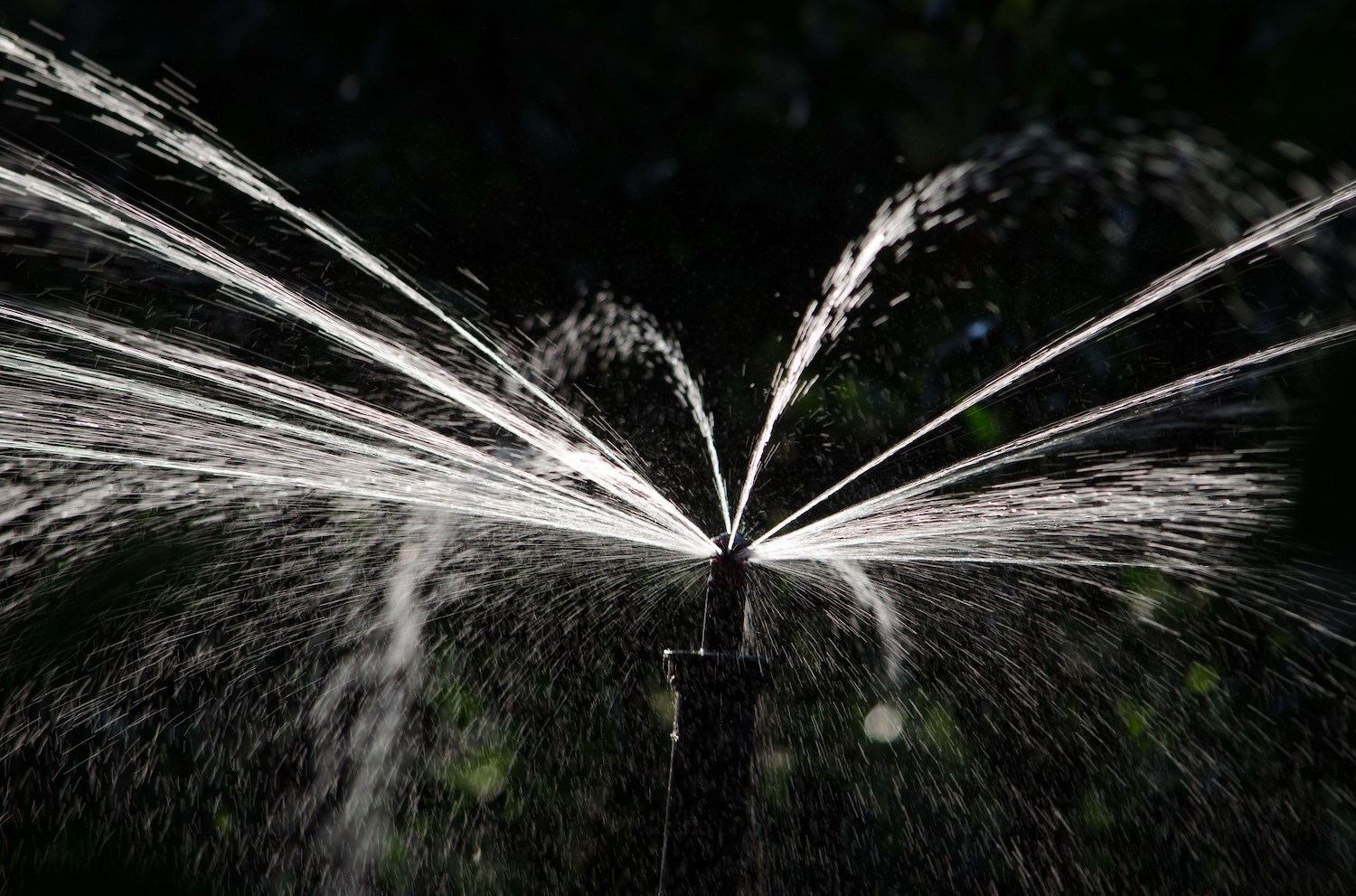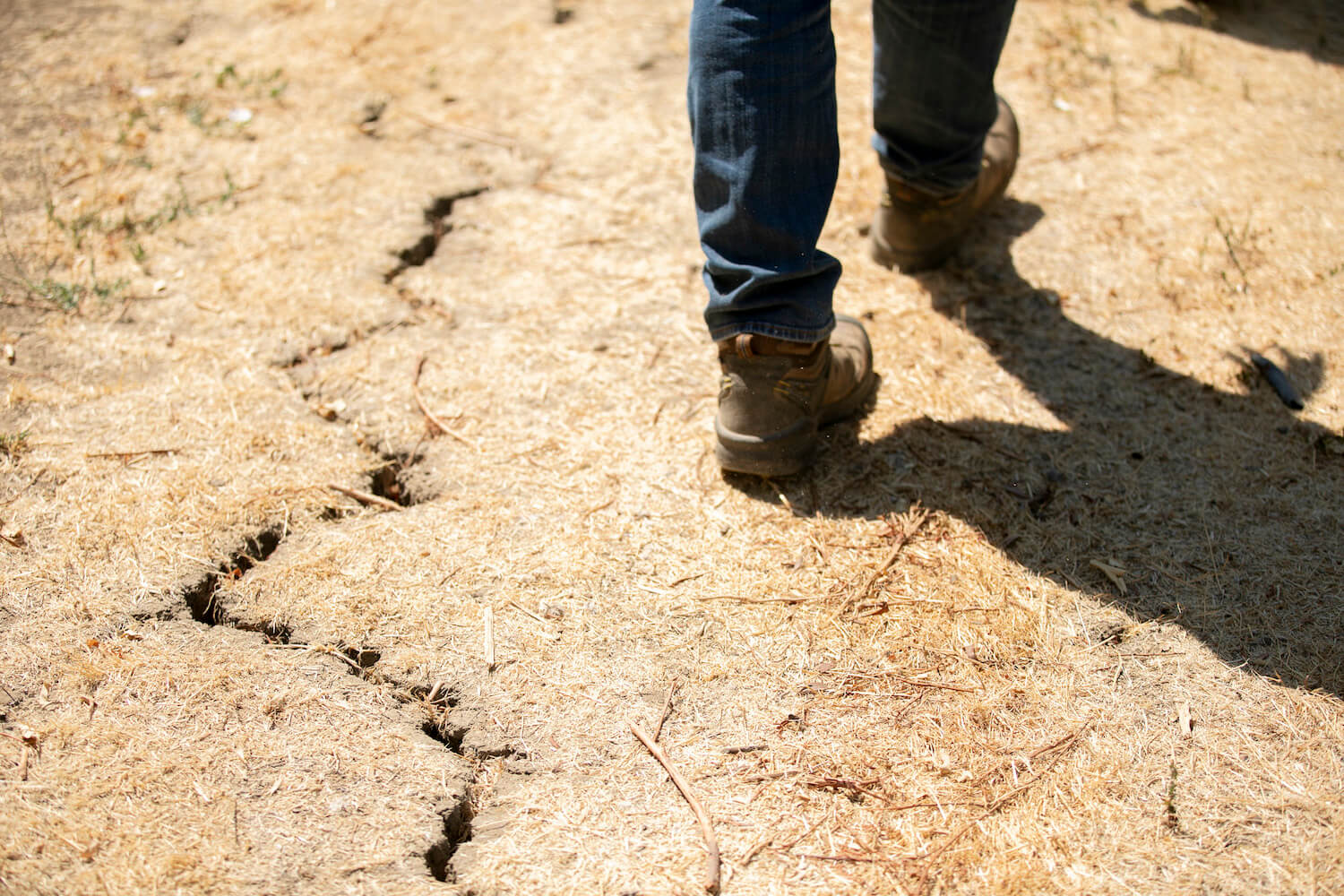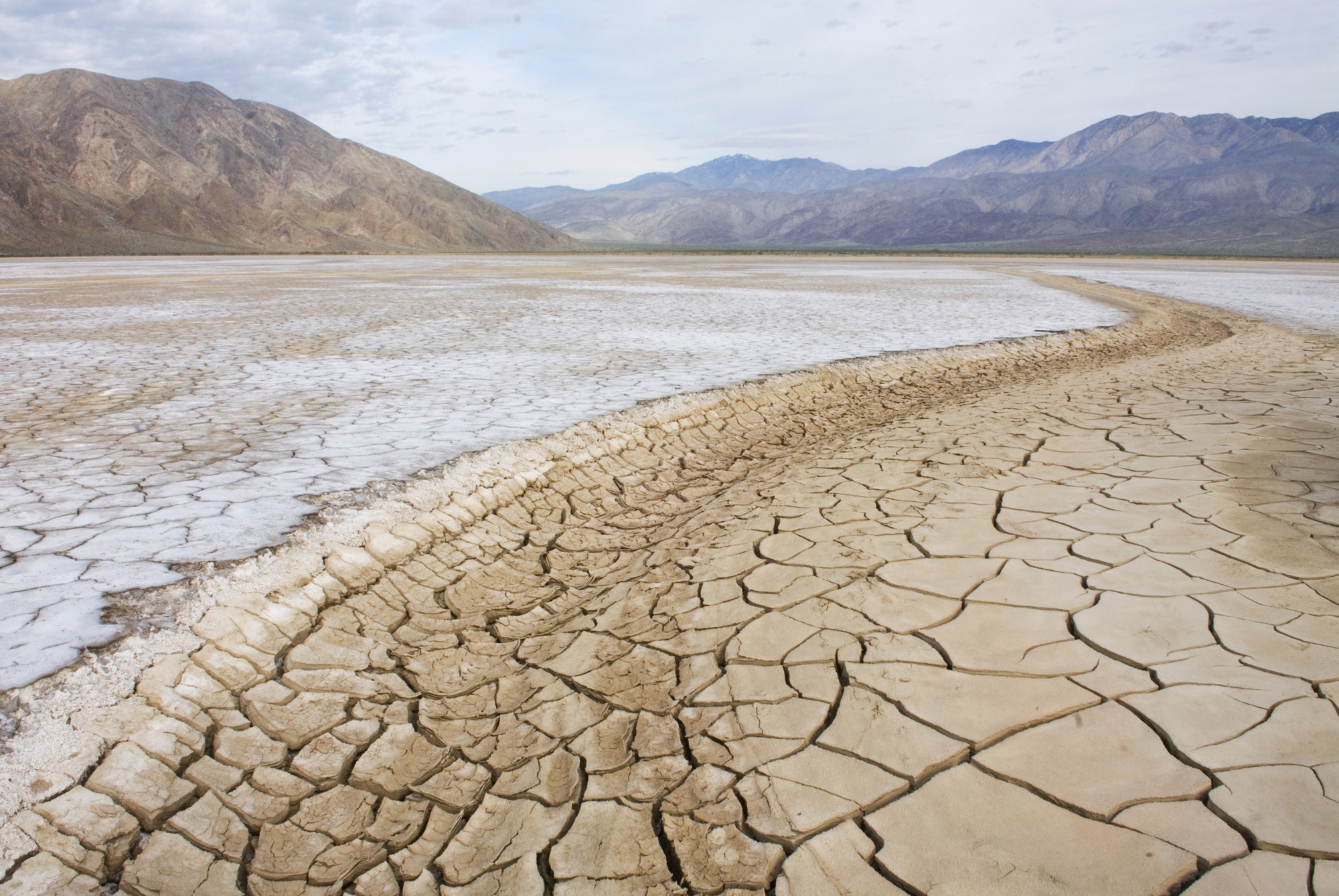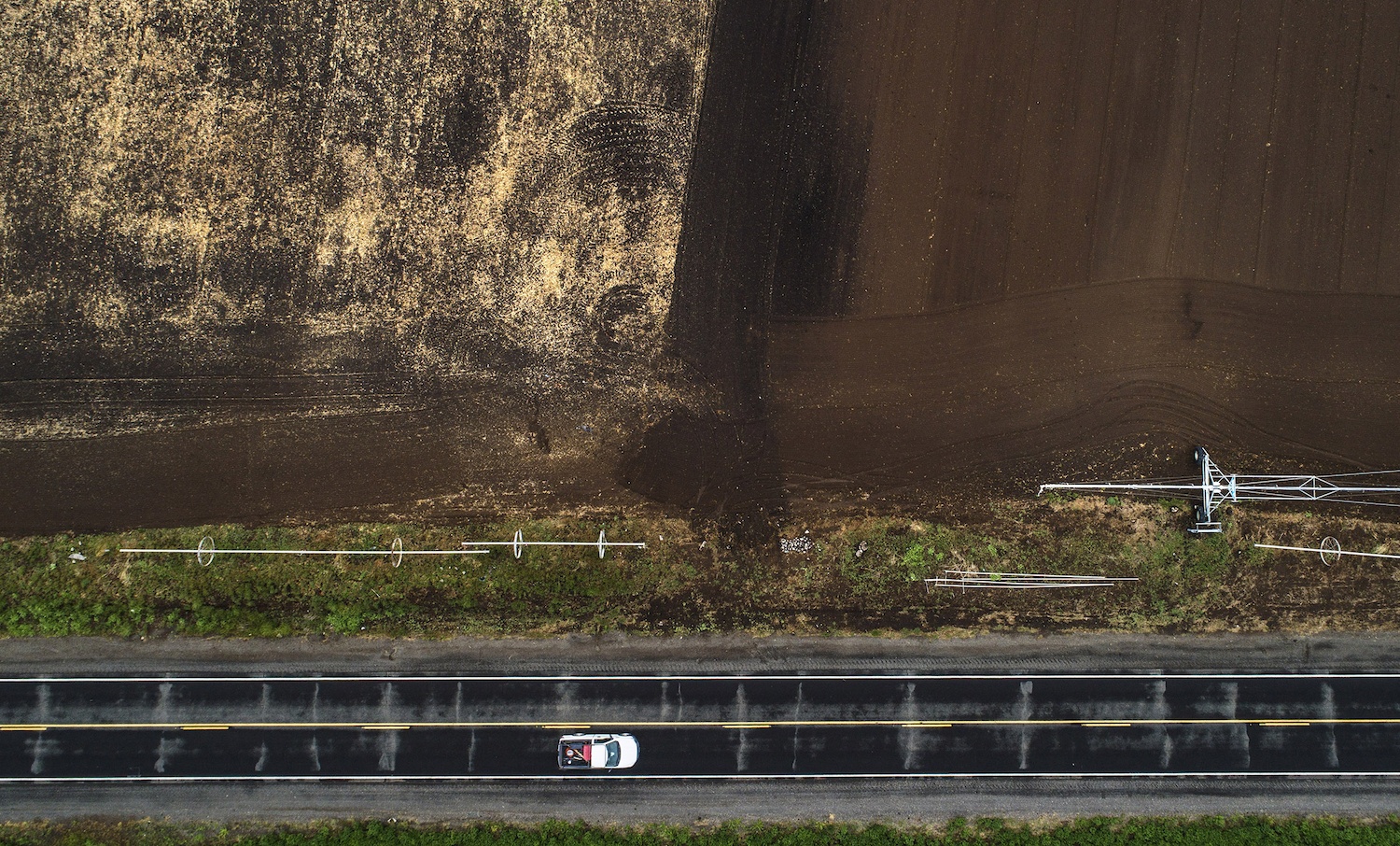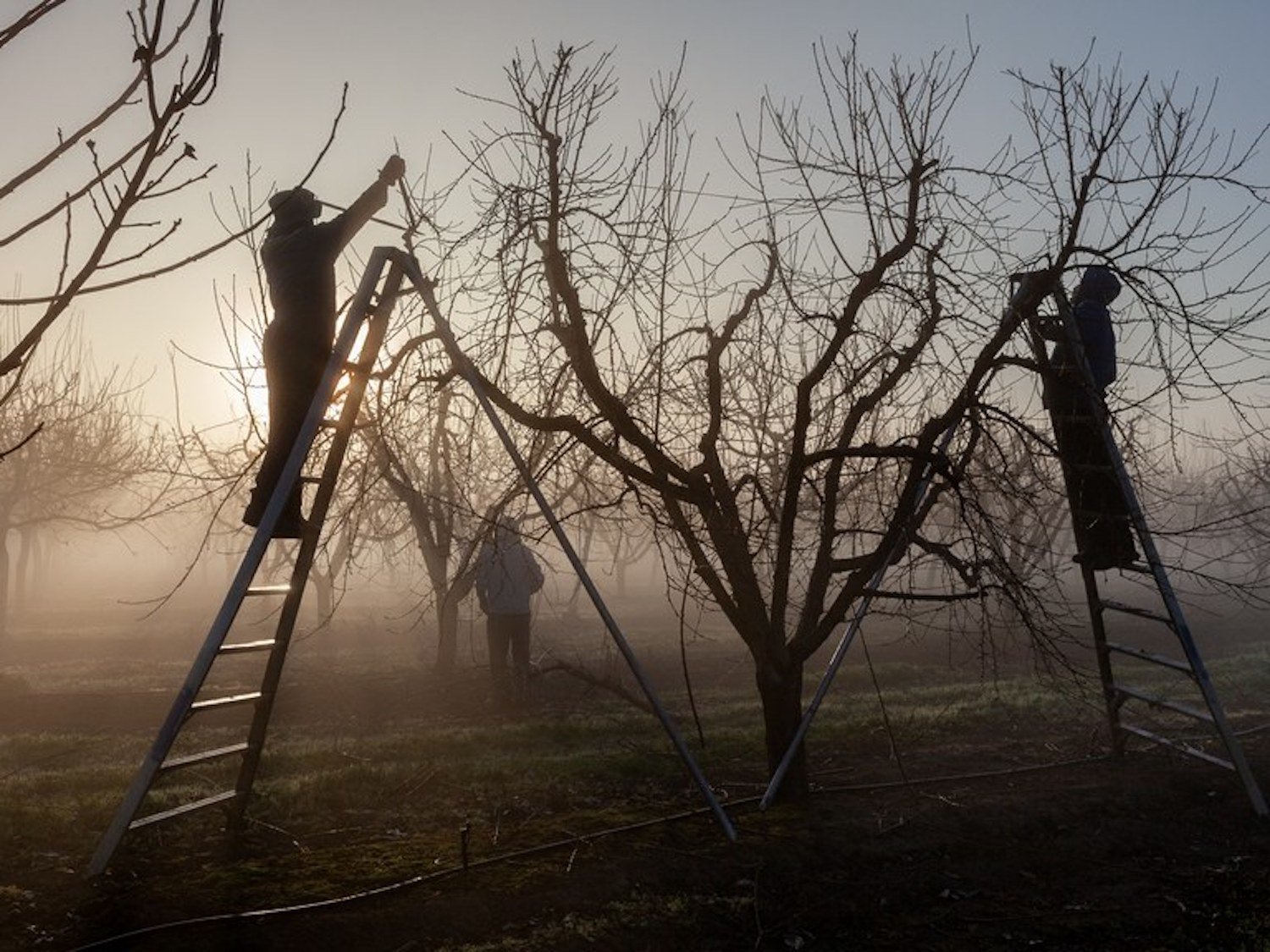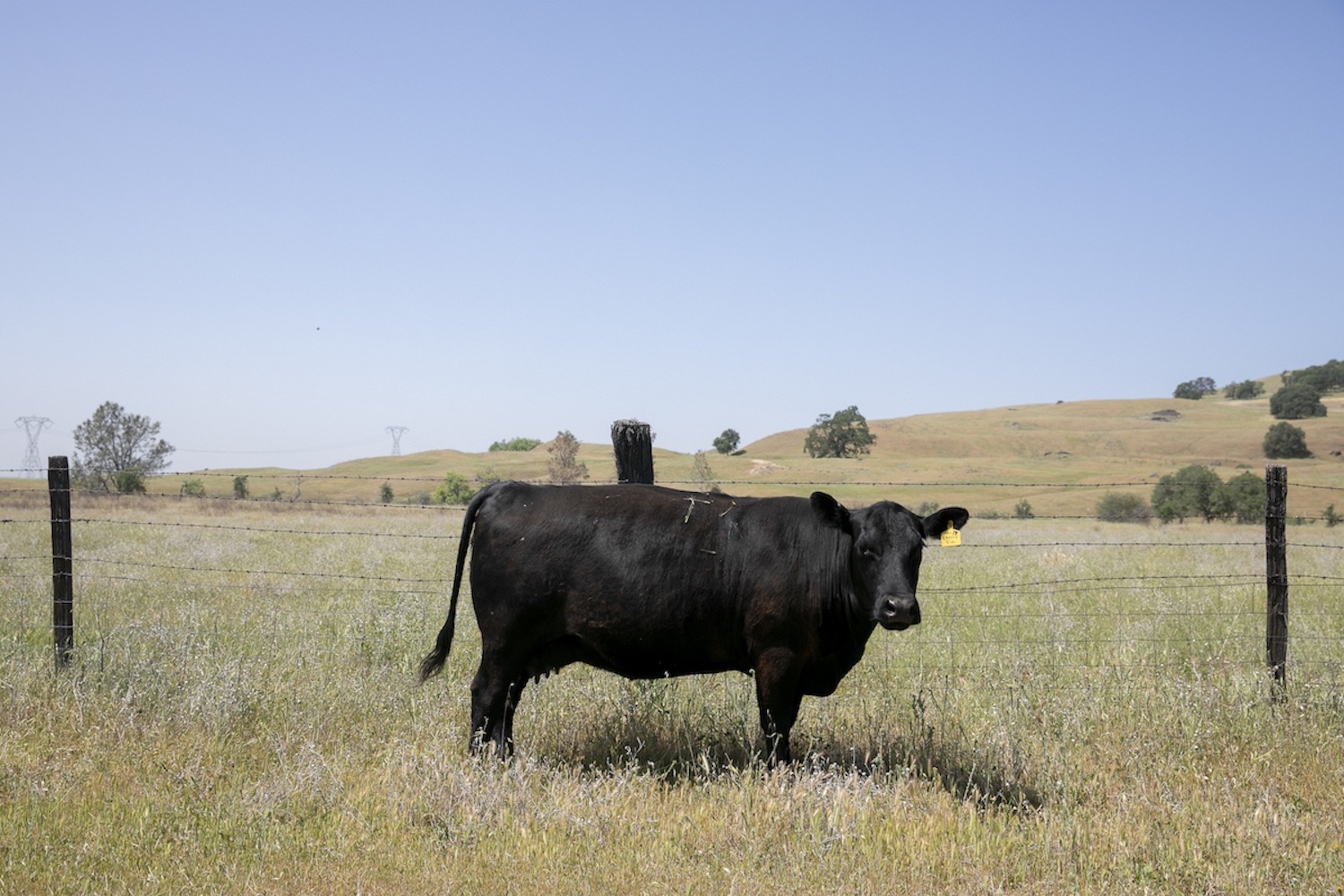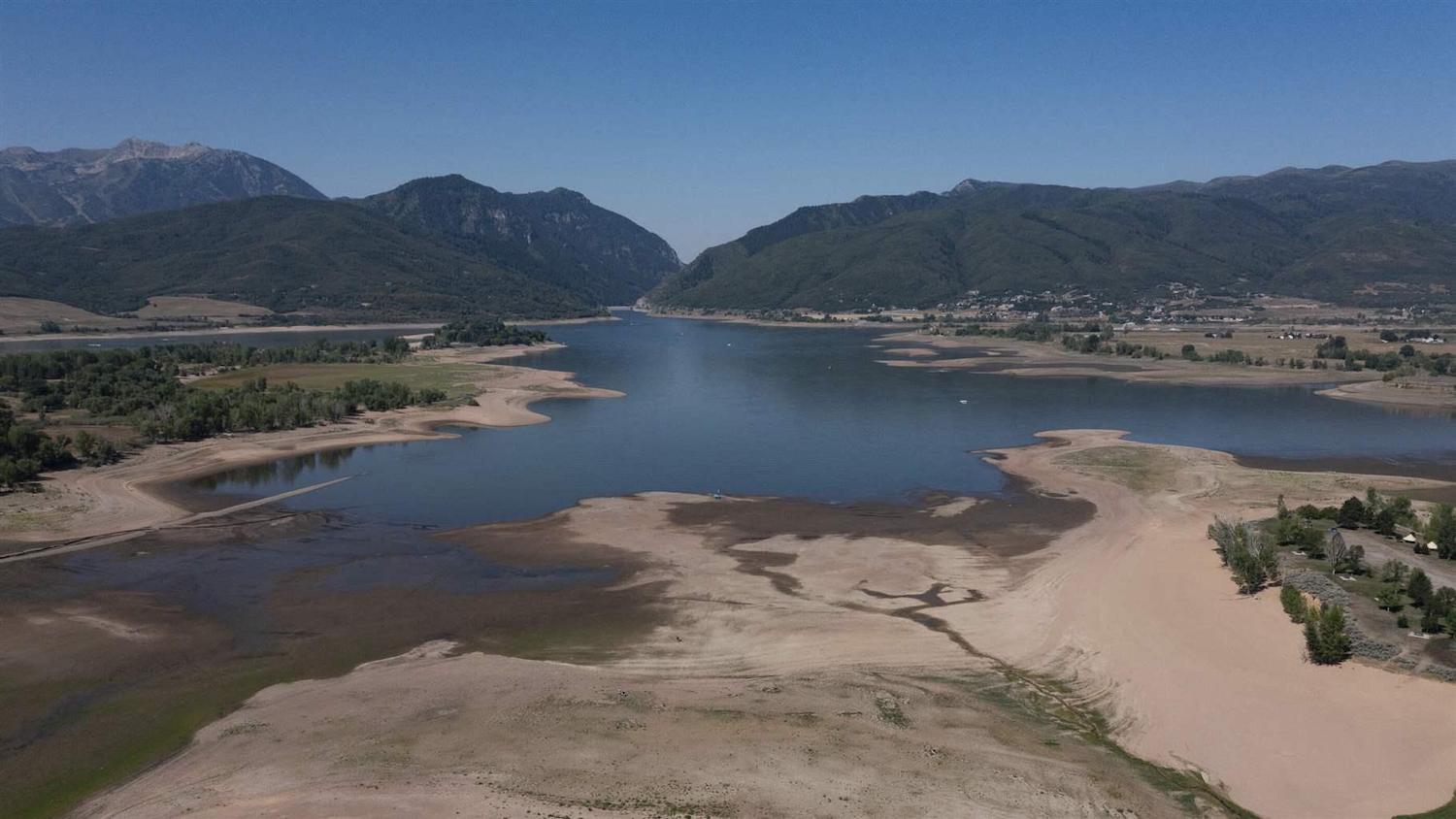
Francisco Kjolseth / The Salt Lake Tribune via The Associated Press
“If we’re going to keep on growing and building new things, we need to do this differently and try to make [water] stretch as far as we can.”
In the small city of Oakley, Utah, the drought conditions parching much of the West have depleted the natural springs that supply water to the community. During each of the past several summers, local leaders worried that quenching any major fire might empty the city’s water tanks.
This article is republished from Stateline, an initiative of The Pew Charitable Trusts. Read the original article here.
Pictured above: Pineview Reservoir in Utah’s Ogden Valley fell to a quarter full in August. One water district in the valley has blocked new hookups for developers to save its scarce supply for existing users.
The city issued water-use restrictions this past April and residents cut back, but officials heard a consistent message from their constituents, said Mayor Wade Woolstenhulme.
“If you guys are so low on water, why do you keep giving out building permits?”
In May, Oakley’s city council voted to pause new development and to prohibit any new landscaping needing irrigation, including private lawns. The 180-day ban was a drastic measure that city leaders were reluctant to take. Woolstenhulme said they had no choice.
“We can only allow [development] that we can provide water for,” he said. “We need to protect the people who live here before we let more people come in.”
A rainy autumn has helped replenish Oakley’s water, and the city plans to drill a new well later this year. That should allow the city to double its water capacity and rescind the building moratorium. But even as Oakley’s fortunes improve, communities throughout the West are facing difficult questions about water scarcity and what it means for future growth—especially because climate change is expected to make such droughts more frequent and intense.
‘We need to do this differently’
The nation’s five fastest-growing states are all in the Southwest or Mountain West, regions of the country that already face severe drought.
“Our growth has been one of our greatest economic benefits as a state, and it’s one of our biggest challenges going into the future,” said Candice Hasenyager, director of the Utah Division of Water Resources. “There’s been this assumption that water will always be there, and we can grow however we want, but if we don’t get water-wise, it could limit our ability to grow in the future.”
Hasenyager’s agency doesn’t regulate development, and she emphasized that local leaders must make growth decisions. Her efforts focus on boosting water conservation and encouraging reuse. The initiatives include promoting landscaping that requires less water, metering untreated water to help reduce usage and helping farmers optimize their water use.
While many communities have begun drilling wells or building piping projects to bolster their supply, Hasenyager said there also has to be a reduction in demand.
“Can we continue to use water like we do today as long as we diversify our supplies?” she said. “The answer is no.”
In Colorado, state leaders are urging communities to change local codes to require more low-water landscaping. They’re also encouraging facilities that treat wastewater to recycle it as drinking water. The state has used grant money to speed up that effort, known as direct potable reuse, by working to establish a regulatory framework and funding demonstration projects.
“We’re going to have a lot more drought with a lot more frequency. If we’re going to keep on growing and building new things, we need to do this differently and try to make it stretch as far as we can.”
“We’ve got to be cutting that demand side a lot harder than we have been,” said Kevin Reidy, a technical specialist with the Colorado Water Conservation Board. “If you can reuse some of your supply over again multiple times, then that’s taking one gallon of water and stretching it four or five times longer.
“We’re going to have a lot more drought with a lot more frequency,” he added. “If we’re going to keep on growing and building new things, we need to do this differently and try to make it stretch as far as we can.”
Temple McKinnon is the director of water supply planning at the Texas Water Development Board, which writes the state’s 50-year water plan. State leaders expect to meet about 30% of their water supply needs through demand reduction, including farming efficiencies and water reuse programs, McKinnon said.
Some regions of Texas are expected to see deficits of irrigated water, which could force farmers to change the crops they grow or convert land to different uses. A handful of municipalities are forecast to see shortages as well, and they’re looking to build new water supply infrastructure. In all, the total cost to implement the state’s water plan is about $80 billion, and local governments and water districts say they’ll need about $47 billion in state money to carry it out.
McKinnon thinks the plan will enable Texas to keep growing. But Larry McKinney, the chair for Gulf Strategies at Texas A&M-Corpus Christi’s Harte Research Institute, noted that agriculture, industry and municipal water use is degrading the ecosystems in Texas river systems and their estuaries in the Gulf of Mexico.
“As we take water away for agriculture or growth or industry, they can’t support the fish and wildlife they once did,” he said. “We’ve pushed it right up to the limits. Our people and our leaders are not used to having limits, but the water limit is upon us.”
McKinney thinks Texas can buy itself some time if it limits water-intensive agriculture, builds desalination plants and curtails landscaping. But “there will be a point at which we cannot sustain the growth we’re seeing now,” he said, “and climate change is stepping on the accelerator.”
‘It could be dire’
Utah—one of the fastest-growing states as well as one of the driest—could offer a worrying preview.
In Henefer, not far from Oakley, some ranchers have had to sell livestock because there’s no longer enough grass for them to eat. The town of about 900 has banned new construction since 2018 because its springs are dwindling.
Henefer is seeking grant money from Utah’s portion of federal relief funds to pipe in water from a nearby reservoir, and it’s looking at increasing its water storage and drilling wells. Mayor Kay Richins said the moratorium is preventing young people from building homes and staying in the community, and he’s eager for the city to increase its water supply and lift the ban. But he’s also fearful of what will happen when building resumes.
“It scares me,” he said. “There may be a mad rush for people to hurry and build, and if we’re not careful, we’ll be out of water again. If [drought] just keeps coming and we see no change, it could lead to an unsustainable situation. It could be dire.”
As neighboring communities and cities throughout Utah grow at a rapid pace, Richins thinks such expansion is not sustainable.
“We looked at each other and said, ‘We cannot do this. We don’t have enough water for our existing active users.’”
“The state is trying to ask people to conserve water,” he said. “Well, for the love of Pete, why are you allowing all this building to go on?”
The Wolf Creek Water and Sewer Improvement District, which serves 1,500 customers in Utah’s Ogden Valley, decided to stop adding new connections earlier this year as its well declined, springs hit record lows and the flow of water in its irrigation system faltered. That angered developers, who had been building at a rapid pace during the pandemic.
“We saw so many houses being built in the valley that we just didn’t think we could support it,” said Miranda Menzies, who chairs the district’s board. “We looked at each other and said, ‘We cannot do this. We don’t have enough water for our existing active users.’”
In response to a call for conservation, residents have cut their water use by 40%, Menzies said. The district is likely to drill an additional well, in hopes of restarting development on the 85 lots where projects have been blocked by the moratorium.
Putting on the brakes
Small, rural communities are the most vulnerable to water shortages. They often have limited water resources and can’t afford the infrastructure necessary to tap into new sources or recycle existing water. But some larger areas are dealing with challenges as well.
In Arizona’s Pinal County, home to nearly half a million people, state officials announced this summer that they would not allow any future development using groundwater sources within a 4,000-square-mile management area. Regulators will no longer issue the permits, known as a Certificate of Assured Water Supply, required for such construction.
Under Arizona’s Groundwater Management Act of 1980, development in certain regions of the state must prove an assured water supply that can sustain residents for 100 years—even in jurisdictions where development is governed by city and county officials. Most of those management areas must balance their groundwater extraction and recharge by 2025.
“They’ve been going along issuing these certificates and then one day decided to reconcile the checkbook,” said county Supervisor Steve Miller. “They went, ‘Whoa, the demand is higher than the availability,’ and they’ve put on the brakes.”
The state will not rescind the certificates it already has issued. Miller estimated that developers already have procured enough to keep building for another eight to 10 years. County leaders are considering other options to provide water, including a desalination project.
“If growth continues and climate change continues to limit supplies, we need to reduce the amount of water that is demanded by the population.”
In California, the Marin Municipal Water District earlier this year considered halting new water hookups as its reservoirs dwindled to historically low levels. Leaders of the district, which serves nearly 200,000 customers, determined that a ban would yield only minimal water savings, while potentially thwarting important affordable housing projects. The district did pass a measure to limit landscaping irrigation at new buildings, and if drought conditions continue, the board may reconsider the hookup moratorium.
The district is exploring pipeline and desalination projects to bolster its supply. Those projects could cost tens of millions of dollars, said Emma Detwiler, the district’s communications manager.
“If growth continues and climate change continues to limit supplies, we need to reduce the amount of water that is demanded by the population,” she said. “We have to diversify our water supply portfolio and make these demand reductions. It’s not an either-or proposition.”
Kathryn Sorensen recently stepped down from her role as director of Phoenix Water Services, where she guided the city’s efforts to build a resilient water supply. Sorensen, who’s now the director of research at Arizona State University’s Kyl Center for Water Policy at Morrison Institute, said Arizona has made great strides in conservation efforts such as the use of reclaimed water. That’s allowed the state to grow by millions of people while using about the same amount of water as it did in the 1950s.
“There’s a long tradition here in the West of people moving out here and then wanting to turn around and close the gate,” she said. “To the extent that can be avoided, it’s important to make the investments to ensure everyone has access to safe, clean drinking water.”
But Hasenyager, the Utah water official, said it’s unclear whether Utah can keep growing at its current rate.
“If I knew with good certainty that our supply would say the same, I would say yes,” she said. “But climate change is a big uncertainty.”

